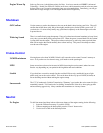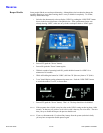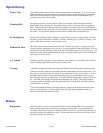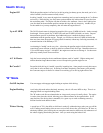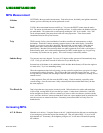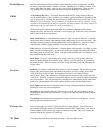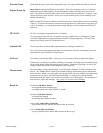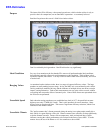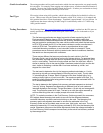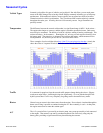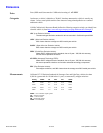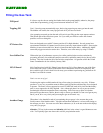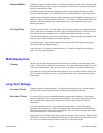On the Highway
Just like with traditional vehicles, efficiency drops the faster you drive on a highway. 60 MPH
(96 km/h) is more efficient than 70 MPH (113 km/h). Speeding up to 75 MPH (121 km/h), you'll
observe MPG drop even more. It pays to drive slower (obey the speed-limit). Think of it this
way, pedaling a bicycle rapidly takes much more energy than pedaling at a moderate rate.
YMMV
"Your Mileage May Vary" That simple statement about the EPA ratings shown on the new
vehicle window sticker is often overlooked, yet it makes a significant difference depending on the
type of driving you do. Reading this quote provided by the EPA about Prius reveals why: "Actual
Mileage will vary with options, driving conditions, driving habits and vehicle's condition. Results
reported to EPA indicate that the majority of vehicles with these estimates will achieve between 51
and 69 mpg in the city and between 43 and 59 on the highway."
EPA tests are generalizations (performed under ideal conditions) intended to make vehicle
comparisons easier, not to specify what MPG you will actually get. In fact, they rarely reflect the
MPG in real-world driving experiences.
Driving
Brisk Acceleration is an often misunderstood benefit. There's no need to hold back. A gasoline
engine works more efficiently when running at higher RPM, about 70 percent of maximum. Take
advantage of that by getting to cruising speed quickly (but not aggressively, please drive safely).
And remember, while the engine running it is also generating electricity for later use.
Coast whenever you have the opportunity. Using the feather technique helps. By lifting your foot
lightly from the accelerator-pedal, you can invoke an efficient computer-controlled glide without
decelerating much at all (less than 1 MPH). With good road conditions and a bit of practice, you'll
find yourself doing this instinctively.
Look Ahead. If you see a light turning red or a need to slow down in the distance, there's no
reason to continue holding the accelerator-pedal. Remove your foot and allow the generator to
decelerate the Prius. That will increase your MPG, charge the battery-pack, and prolong the life
of your brakes.
Tire Care
42/40 PSI (2.9/2.8 bar) is what many Prius owners strongly recommend. The original tires for the
Classic (2001-2003) Prius support a maximum cold pressure of 50 PSI (3.4 bar), for the HSD
(2004-2005) Prius 44 PSI (3.0 bar). So that pressure increase is well within the design
specifications. Many of the alternate tires available support a maximum cold pressure of 44 PSI
(3.0 bar) too. Whatever you decide, just remember that low pressure results in a MPG drop and the
tires wear out faster. Tires will not bulge like in decades past; manufacturers provide much better
quality now which maintains a flat contact surface all the way up to the maximum pressure.
Every 5,000 (8,000 km) the tires should be rotated, for best lifetime performance. Rotation is
preferred in a roll-back, roll-forward pattern.
Measuring the PSI should be done only when the tires are cold, since driving heats up the air
inside the tires making the results inaccurate... giving you the impression more pressure is higher
than it really is.
Check Often since temperature causing pressure to drop, 1 PSI for every 10F degrees. Air will
naturally leak out from normal use too.
87 Octane Gas
Prius was designed to run with 87 Octane gasoline (85 in high altitudes). Some owners have
experimented with higher octanes, but found there wasn't any MPG improvement. Also, bear in
mind that higher octane gasoline may trigger an emission sensor alert. So just save money and
continue using the less expensive 87 octane gas.
"B" Mode
Avoid using this mode unless absolutely necessary; it will cause MPG to drop.
Prius User-Guide 10 of 45 Last Updated: 2/07/2006




